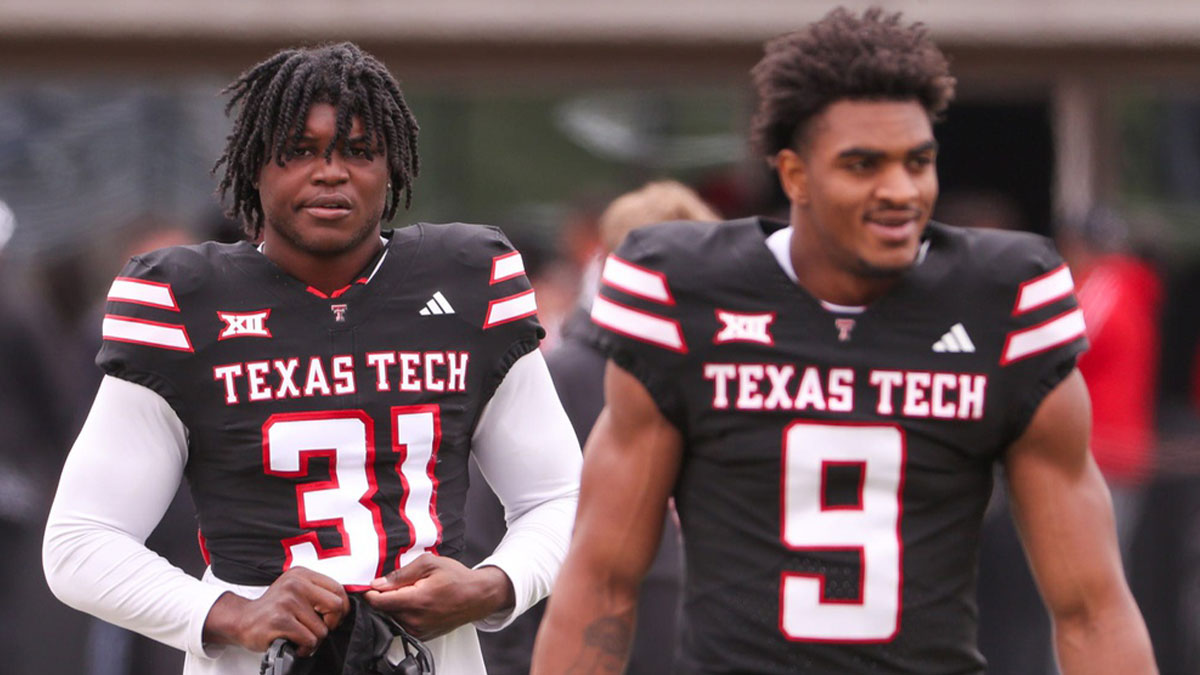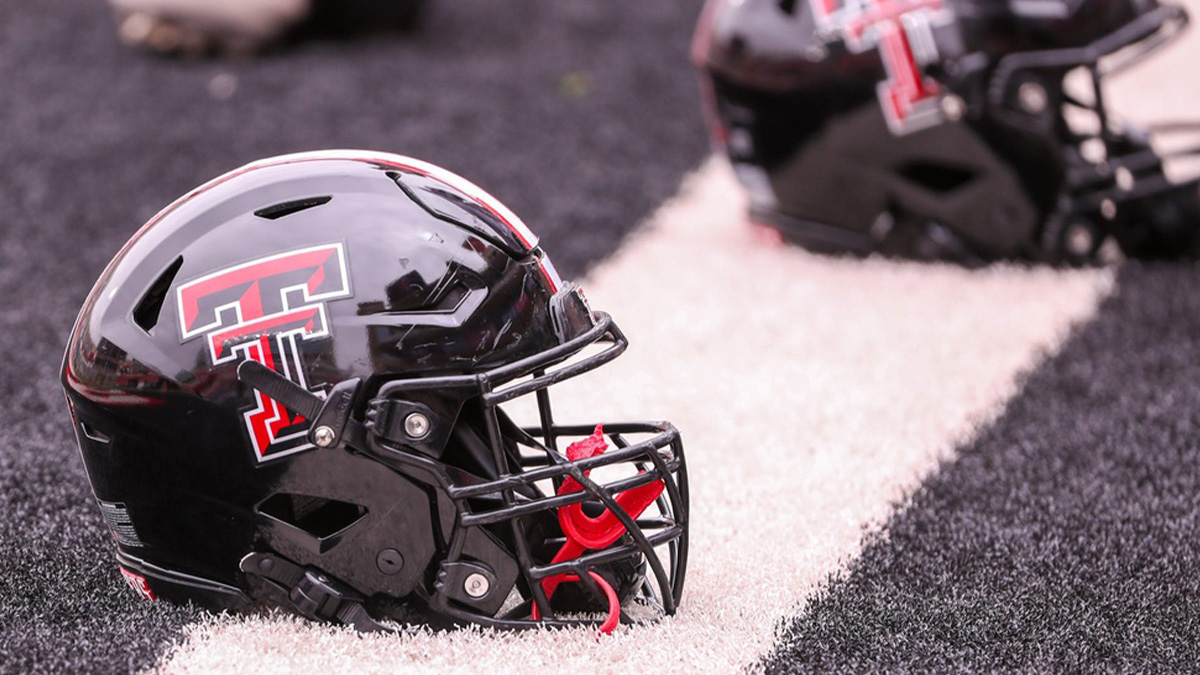NIL
Between the Columns for Monday, June 2
It’s Monday morning, so it’s time for me to let you all know what’s been on my mind the past week. For another week, I’m going to run through some excellent reporting from Ross Dellenger for Yahoo Sports, this time about the SEC spring meetings and all the info that has come out of there. […]

It’s Monday morning, so it’s time for me to let you all know what’s been on my mind the past week. For another week, I’m going to run through some excellent reporting from Ross Dellenger for Yahoo Sports, this time about the SEC spring meetings and all the info that has come out of there. This one might be a little more wide ranging, since there isn’t one story’s worth of reporting I’m really diving into.
Let’s get started.
1. The first quote I saw that sent me reeling a bit.
“I have people in my room asking, ‘Why are we still in the NCAA?’”
That’s a quote from SEC Commissioner Greg Sankey.
I have talked before about splitting college football and college basketball off from the current system so that the Olympic sports can go back closer to what they used to be in terms of conferences and NIL and that type of stuff, which I stand behind. I think that would be a good idea.
This is not that.
The SEC is obviously powerful, it’s not powerful enough to stand on its own outside of the rest of college sports.
Would the conference seasons still be interesting? Sure. Would the conference tournament be interesting? Sure. Would any of it matter if the SEC can’t participate in the College Football Playoff, March Madness or the College World Series/Women’s College World Series?
No.
We can talk all we want, and the SEC administrators did a lot this week, about how much stronger the SEC is than the rest of college athletics, and for the most part, I agree. I don’t think the gap is as wide as it’s made out to be, but the SEC is an incredibly strong conference in just about every sport right now.
But to say it could stand on its own completely is ludicrous.
Back in February, I talked about the difference in television ratings between the NFL and college football. I’ll run back the numbers a little.
The Super Bowl this year had an average of 127.7 million viewers.
The College Football Championship averaged 22.1 million viewers (Michigan vs. Washington was the highest in CFP history, averaging 25 million. Weird how the two most watched didn’t involve the SEC).
The SEC Championship averaged 16.6 million. That’s a significant drop-off, though not as significant as I expected.
It did dominate the other conference championships, next up was the Big 10 at 10.5 million, but it’s not enough to say the SEC could make up the money it needs to by exiting the major tournaments.
Sankey didn’t say the SEC was really considering it or that it was a possibility, but the fact that people are even bringing it up in the room and Sankey thought it was worth bringing up in front of a major audience full of reporters is telling.
The SEC is strong, but it’s not that strong. I’m telling you guys from a slightly outside perspective having lived the first 27 years of my life nowhere close to the SEC, the rest of the country doesn’t care that much.
Growing up, I loved college football, so I had to care a little bit about the SEC because LSU, then Florida, then Alabama were winning all the time. But I wouldn’t have cared at all had they not been title contenders. And no one outside of the conference area is going to buy it if the SEC were to split off and claim “Our champion is the REAL national champion” especially since this type of move would assumedly come with NCAA teams being barred from playing SEC teams in the regular season as well.
2. There was a lot of talk about how the SEC should be more heavily weighted by the playoff committee.
NIL
Texas Tech took NiJaree Canady NIL approach with 2026 five-star OT Felix Ojo, but football is not softball
Texas Tech took the NiJaree Canady NIL approach with 2026 five-star OT Felix Ojo. But paying big, guaranteed money to a proven softball pitching transfer who can single-handedly control games as compared to paying big, guaranteed money to an incoming freshman offensive tackle is a totally different kind of risk, especially in the new era […]

Texas Tech took the NiJaree Canady NIL approach with 2026 five-star OT Felix Ojo. But paying big, guaranteed money to a proven softball pitching transfer who can single-handedly control games as compared to paying big, guaranteed money to an incoming freshman offensive tackle is a totally different kind of risk, especially in the new era of revenue sharing with student-athletes.
Tech is paying Ojo $2.325 million – guaranteed – for the next three years (an average of $775,000 per season), with a verbal agreement that Tech will renegotiate up to $5 million total if NIL money goes back to a Wild West setup, according to Matt Zenitz of CBS Sports.
Additional info on Texas Tech’s deal with new five-star offensive tackle commit Felix Ojo:
A source tells @cbssports it’s a three-year deal averaging $775,000 a year with a verbal understanding that Tech will renegotiate up to $5 million if things shift back to a Wild West setup https://t.co/YjrV9oQdSy pic.twitter.com/T2MqDjOrKQ
— Matt Zenitz (@mzenitz) July 4, 2025
This is the kind of high-risk, high-reward precedent Tech set with Canady, who got $1,050,024 to sign with Tech after her sophomore season at Stanford and helped Tech finish runner-up to Texas in the championship final of the Women’s College World Series last month.
Canady’s record deal for a softball player was staggering but came with managed risk considering she had already earned NFCA National Freshman of the Year at Stanford in 2023 and followed that up by being named USA Softball’s Collegiate Player of the Year in 2024 all while leading the Cardinal to two straight WCWS appearances.
A guaranteed deal of this size for an incoming freshman football player in the revenue-sharing era of college athletics is a significant risk and will undoubtedly lead to more agents for high-end high school recruits demanding big, multi-year guarantees.
NIL
Jasper Johnson shines in Team USA’s dismantling of New Zealand
Team USA’s U19 team continued their dominant run in the FIBA World Cup on Saturday in Switzerland. Now Kentucky guard Jasper Johnson will get a change to play for a gold medal on Sunday in this international event. Let’s just say it was a long night for New Zealand. On Fourth of July weekend, USA […]

Team USA’s U19 team continued their dominant run in the FIBA World Cup on Saturday in Switzerland. Now Kentucky guard Jasper Johnson will get a change to play for a gold medal on Sunday in this international event.
Let’s just say it was a long night for New Zealand. On Fourth of July weekend, USA basketball continued to roll with a 120-61 victory. We nearly got a Team USA by 90 result.
Jasper Johnson finished the blowout win with 14 points on 11 field goal attempts with three three-point field goals in 18 minutes on the floor. Team USA was plus-12 with Jasper on the floor.
The top-25 recruit continues to impress in this international event. Before Jasper’s big performance, the guard was averaging 7.4 points, 1.4 assists, 1.2 rebounds, and one steal in 14.6 minutes off the bench while shooting 42.1 percent (8-of-19) from long range. Jasper is now shooting 42.3 percent (11-of-26) from downtown in this event. Kentucky’s young guard has shown some offensive efficiency that should translate to the next level. Many in the college basketball online community are taking notice.
“If Jasper Johnson is hitting shots from deep, you are at his mercy. The Kentucky guard is so crafty off the bounce that if you have to close out tight, he’s tough to stay in front of,” Field of 68 analyst Terrence Oglesby wrote on Twitter/X on Saturday. “I think he’ll have some big games this year, but the physicality of the SEC is different.”
Jasper Johnson’s skill and scoring potential has shown up in Switzerland. Now we’ll need to see how the young player will transition to the physicality of college basketball but we know this potential diaper dandy can get buckets.
Team USA will face Germany on Sunday in the gold medal game. Tip-off is scheduled for 2:00 p.m. ET/1:00 p.m. CT.
NIL
5-star commit’s NIL deal revealed
Texas Tech football launched the biggest fireworks on the recruiting end for Fourth of July. Felix Ojo spurned multiple powers for the Red Raiders Friday. Becoming a rare five-star commit for the Lubbock university on the college football recruiting trail. But how were the Red Raiders able to coax the dominating tackle? Especially with Texas, […]

Texas Tech football launched the biggest fireworks on the recruiting end for Fourth of July. Felix Ojo spurned multiple powers for the Red Raiders Friday. Becoming a rare five-star commit for the Lubbock university on the college football recruiting trail.
But how were the Red Raiders able to coax the dominating tackle? Especially with Texas, Michigan, Florida even defending national champion Ohio State all in the final mix for him?
Texas Tech turned to NIL money to convince Ojo that Lubbock is the place for him. The Athletic helped pull back the curtain on the Red Raiders courting Ojo.
Ojo agreed to a three-year, $2.3 million revenue-sharing contract, The Athletic revealed on Saturday. But the outlet also delivered clarity on one reported contract involving the Mansfield, Texas talent.
How much Felix Ojo could earn after joining Texas Tech recruiting class

Ojo’s agent Derrick Shelby of Prestige Management spearheaded the NIL process for the newest Red Raider.
Turns out there was a contract figure that needed to be clarified by The Athletic.
“ESPN reported on Friday that Ojo was receiving a three-year deal worth $5.1 million, according to his agent, Derrick Shelby of Prestige Management. Shelby confirmed those figures to The Athletic on Saturday, but three Texas Tech sources refuted that number, with two confirming that Ojo is scheduled to receive an annual compensation of $775,000 per year for three years from Tech’s revenue-sharing pool,” the report reads.
There’s additional figures attached to Ojo. He received a verbal agreement “that can escalate the total value of the contract into the $5 million range.” However, that figure surfaces “if there were a large jump in the revenue sharing cap for schools or if there is minimal regulation of schools’ adhering to the cap.”
Ojo isn’t the only massive recruiting win. Four-star safety Donovan Webb spurned Michigan for Texas Tech on Wednesday. Webb originally was favored to land with the Wolverines per multiple outlets. Texas Tech is now 25th overall in the national recruiting rankings per 247Sports for the 2026 class.
NIL
College sports has a soft salary cap now. How does it work?
College sports has another before and afterdate. Before July 1, 2025 – this Tuesday – athletes could make money off their name, image and likeness (NIL) but not be paid directly by their schools. And after July 1, that has changed, making college sports look and feel even more like the pros. Some of the […]

College sports has another before and afterdate.
Before July 1, 2025 – this Tuesday – athletes could make money off their name, image and likeness (NIL) but not be paid directly by their schools. And after July 1, that has changed, making college sports look and feel even more like the pros.
Some of the long-standing differences and caveats still apply. College athletes are not considered employees. Therefore, unlike athletes in the NFL, the NBA, the WNBA, the NHL and MLB, their pay and working conditions were not established through a collective bargaining process. But at least one major change will be familiar to any fan of those professional leagues.
College sports has a (soft) salary cap now. Let’s unpack.
HOW DID THIS COME ABOUT?
At the most practical level, the soft salary cap (or revenue sharing cap) is part of the massive legal settlement approved in early June. Commonly referred to as the House settlement, it consolidated three antitrust cases, all of them challenging past restrictions of college athlete compensation. And in that process, the defendants – the NCAA and the power conferences – agreed to allow schools to share revenue with (or pay) athletes directly for the first time. That officially started Tuesday.
Lawyers for the defendants and plaintiffs settled on an initial annual cap of $20.5 million per school. That is for athletes across sports, though a bulk of the money will go to salaries for football and men’s basketball players. Not every school will spend to the cap, though many power conference programs will. More than 300 Division I schools have opted into the new economic model, meaning they can pay athletes – up to that cap – but also have to abide by new roster limits in each sport. Schools that chose not to opt in are not allowed to pay athletes through revenue sharing. For now, this cap explainer is not relevant to them.
WHY $20.5 MILLION?
The starting cap was calculated by taking 22 percent of the average athletic revenue for power conference schools. In this case, the figures were from the 2023 and 2024 fiscal years. Importantly, only a specific set of revenue streams was considered, which has the attention of the plaintiffs’ attorneys for House. Each year, the settlement will require the NCAA to share the data used to calculate the cap with the plaintiffs’ attorneys. From there, the settlement permits the attorneys to “reasonably audit” the data – and this week, Steve Berman, one of the lead attorneys, told USA Today they are doing just that. In question is whether certain revenue streams were not counted and should be, which could increase the initial number.
Berman told USA Today that he is fine with going ahead with $20.5 million for 2025-26. But if the number were recalculated in an auditing process …
… THAT WOULD BE SIGNIFICANT. WHY?
Great question. Perfect time to ask.
The settlement is a 10-year agreement. The cap will rise and recalculate throughout that span. There will be a 4 percent bump before the second, third, fifth, sixth, eighth and ninth years. There will be a recalculation, using that same 22 percent formula, before the fourth, seventh and 10th years. So if the baseline changed because of an immediate audit of the $20.5 million figure, there could be a trickle-down (or trickle-up?) effect on the initial annual increases.
WHAT COUNTS AS SPENDING TOWARD THE CAP?
Three streams: revenue-sharing money paid to athletes, which will essentially function as salaries; scholarship spending above previous NCAA limits; and other education-related payments, known as Alston money.
Alston money can account for up to $2.5 million per year toward the cap. Same with scholarship spending, though that part is a bit trickier to explain. The settlement permits schools to pay an uncapped amount of scholarship money to a fixed number of athletes across sports. Or in other words: Previous limits on scholarship spending have been replaced by new roster limits, meaning more money distributed to fewer athletes. A football team, for example, can carry a maximum of 105 players and offer 105 full scholarships, if it so chooses. But as far as the $20.5 million cap is concerned, only scholarship money spent above previous NCAA limits – and only up to $2.5 million per year – will count toward it. Confused? Welcome to the life of a longtime college compliance staffer.
WHY HAVE YOU REPEATEDLY REFERRED TO THIS AS A SOFT CAP?
Another great question.
Until this point – before July 1, 2025 – boosters funded five-, six- and seven-figure salaries in football, men’s basketball and, to a lesser extent, women’s basketball and other sports. With rules established by the settlement, the NCAA and the power conferences hope to change that. Any NIL deal that exceeds $600 will have to go through a clearinghouse, which will trigger a review of who is paying and what services they will receive from the athlete, among other factors. The hope, for the leaders of college sports, is to eliminate situations in which an athlete receives $500,000 for a few social media posts.
At the highest levels of the biggest sports, those deals have fueled the NIL economy for the past four years. Donor groups, known as NIL collectives, typically have brokered them. Many legal experts are skeptical that the enforcement efforts would hold up against more antitrust suits.
And throughout the history of college sports, there’s at least one certainty: Motivated rich people will find a way to help their teams win. For that reason – that donors and NIL collectives will help schools spend above the $20.5 million barrier – it feels most responsible to call it a soft cap. The whole system could put at least some athlete payments back under the table, such as when they used to be delivered in McDonald’s bags before the NCAA changed its NIL rules in 2021.Plus, beyond donor money, schools and collectives can still help athletes land brand deals to enhance their income.
At the top of college football and basketball, spending from the revenue-sharing pool will be viewed as a baseline. It will, as ever, take a lot more money to thrive.
NIL
Paul Finebaum Claims College Football Playoff Team is Better Off Despite Losing Elite QB
Paul Finebaum Claims College Football Playoff Team is Better Off Despite Losing Elite QB originally appeared on Athlon Sports. The quarterback position is often considered the most crucial in all of sports. The quarterback is usually the first to take the snap, and it’s his responsibility to make the right decisions in both the passing […]

Paul Finebaum Claims College Football Playoff Team is Better Off Despite Losing Elite QB originally appeared on Athlon Sports.
The quarterback position is often considered the most crucial in all of sports. The quarterback is usually the first to take the snap, and it’s his responsibility to make the right decisions in both the passing and running games, especially given the variety of options teams employ today to score points.
Advertisement
As a result, losing a top quarterback is typically not advantageous. However, ESPN’s Paul Finebaum believes that one team has benefited this offseason from the loss of its star quarterback. That team is the Tennessee Volunteers, who unexpectedly lost redshirt sophomore quarterback Nico Iamaleava to the transfer portal.
Iamaleava entered the portal just before the spring game, reportedly due to a dispute over an NIL contract. He transferred to the UCLA Bruins, while a former Appalachian State quarterback, who was initially committed to UCLA, changed his commitment and instead joined Tennessee.
On “The Paul Finebaum Show,” the SEC Network analyst expressed his belief that Tennessee is in a better position without Iamaleava.

Tennessee head coach Josh Heupel talks to Tennessee quarterback Nico Iamaleava.Caitie McMekin/News Sentinel / USA TODAY NETWORK via Imagn Images
“It’s pretty obvious the chemistry was not great last year,” Finebaum said. “I think just from a locker room standpoint, Tennessee is in much better shape. Now, is Aguilar the quarterback potentially that Nico was? No. I don’t think there’s any doubt about that. But I don’t think he has to be elite. He just has to get the ball down the field, which Nico could not do very often.”
Advertisement
Finebaum has been quite critical of Iamaleava this offseason. He recently remarked that he believes it won’t be difficult for another player, Aguilar, to have a better season than Iamaleava did last year. Finebaum anticipates that Aguilar will outshine Iamaleava’s performance in 2024.
Despite the criticism, Iamaleava played a crucial role in leading the Volunteers to their first appearance in the College Football Playoff, demonstrating flashes of his elite potential. As a former five-star recruit and the top player in the 2023 class, he had an impressive inaugural season as a starter, throwing for 2,616 yards, 19 touchdowns, and just five interceptions.
In contrast, Aguilar accumulated 6,760 passing yards, 56 touchdowns and 24 interceptions while completing 60.1% of his passes over his two seasons at Appalachian State. He also rushed for 452 yards and five touchdowns.
The Volunteers are set to kick off their season on Aug. 30 against the Syracuse Orange at noon ET.
Related: Paul Finebaum Names Major College Football QB Whose Career Has Been Set Back
This story was originally reported by Athlon Sports on Jul 5, 2025, where it first appeared.
NIL
Texas Tech’s latest recruiting coup: 5-star offensive tackle Felix Ojo
By Sam Khan Jr., Bruce Feldman and Justin Williams Texas Tech continues to be a major player in college sports’ new era of player compensation, with the latest evidence coming in the form of a football recruiting coup. The Red Raiders landed a commitment on Friday from five-star offensive tackle Felix Ojo, the No. 1 […]

By Sam Khan Jr., Bruce Feldman and Justin Williams
Texas Tech continues to be a major player in college sports’ new era of player compensation, with the latest evidence coming in the form of a football recruiting coup.
The Red Raiders landed a commitment on Friday from five-star offensive tackle Felix Ojo, the No. 1 recruit in Texas and a top 10 national recruit in the 2026 class, after the parties agreed to a three-year, $2.3 million revenue-sharing contract, two school sources confirmed to The Athletic on Saturday.
Ojo, a 6-foot-6, 275-pound recruit from Lake Ridge High in Mansfield, Texas, was one of the most heavily recruited prospects in the country, with 50 scholarship offers, according to 247Sports. In addition to Texas Tech, Ojo took official visits to Colorado, Florida, Michigan, Notre Dame, Ohio State, Ole Miss, Texas and Utah. If Ojo officially signs with the Red Raiders during the December signing period, he would be the highest-rated prospect Texas Tech has signed in the modern recruiting era and the second five-star, joining 2024 receiver Micah Hudson. Ojo is the No. 7 recruit in the 247Sports Composite and No. 6 in the On3 Industry rankings.
It was a bit of a surprise on the recruiting trail, as Ojo’s reported finalists were Texas, Ohio State, Michigan and Florida, with the Longhorns and Buckeyes leading the race in the home stretch, according to Rivals.com. But Texas Tech, which has proved to be one of the biggest spenders in name, image and likeness compensation in the last year, remained firmly in the recruitment — even if not publicly — since Ojo’s official visit to Lubbock in April.
During his commitment announcement on Friday, Ojo initially put on a Longhorns hat before switching to a Texas Tech hat.
Mansfield Lake Ridge 5-star offensive lineman Felix Ojo first puts on a Texas hat, and the crowd goes wild, then he pulls a surprise and says he is actually committing to Texas Tech.#txhsfb @SportsDayHS @dctf @MISDathletics @247sports @TexasTechFB @TexasFootball @Rivals pic.twitter.com/WwbhCpjS3S
— Greg Riddle (@DMNGregRiddle) July 4, 2025
ESPN reported on Friday that Ojo was receiving a three-year deal worth $5.1 million, according to his agent, Derrick Shelby of Prestige Management. Shelby confirmed those figures to The Athletic on Saturday, but three Texas Tech sources refuted that number, with two confirming that Ojo is scheduled to receive an annual compensation of $775,000 per year for three years from Tech’s revenue-sharing pool. Ojo’s deal, according to a Tech source, includes a verbal agreement that can escalate the total value of the contract into the $5 million range if there were a large jump in the revenue sharing cap for schools or if there is minimal regulation of schools’ adhering to the cap, in much the way there has been minimal regulation of NIL since its institution in 2021. Shelby declined to share a copy of the contract with The Athletic but stood by the initially reported numbers.
The news of Ojo’s commitment and contract agreement represents the continued changing tides of college recruiting. After the approval of the House v. NCAA settlement and implementation of revenue sharing, colleges can allocate up to roughly $20.5 million to pay athletes across their sponsored sports. Schools could begin directly paying players on their current roster on July 1. They can verbally negotiate deals with future recruits and send official written scholarship offers and revenue-sharing contract offers beginning Aug. 1 of the recruit’s senior year of high school, but those contracts cannot be signed until each respective sport’s signing period begins, which is Dec. 3 for the FBS.
The national letter of intent program, which used to bind a recruit to a school, was eliminated by the NCAA in October and replaced by financial aid agreements that prohibited other schools from recruiting a prospect once signed.
Texas Tech has been aggressive in the NIL space in recent years and will continue to be in the era. The Matador Club, the school’s NIL collective, was one of the first to implement team-wide NIL contracts for football players in 2022. The Red Raiders made a splash in softball, signing former Stanford pitcher NiJaree Canady to a one-year deal worth more than $1 million last summer (Canady led Tech to the Women’s College World Series final, where the Red Raiders lost to Texas). In men’s basketball, the team retained second-team All-American JT Toppin to a deal of more than $3 million in April.
Tech’s football team spent more than $10 million on its transfer portal class this offseason, landing multiple highly coveted transfers, including former North Carolina offensive tackle Howard Sampson, former Stanford edge rusher David Bailey and former Georgia Tech edge rusher Romello Height. The Red Raiders’ portal signing class is ranked No. 1 by On3 and No. 2 by 247Sports.
Billionaire oil magnate Cody Campbell, a former Texas Tech offensive lineman, co-founder of the Matador Club and chairman of the school’s board of regents, told The Athletic last month that Tech would spend an estimated $55 million combined in revenue-sharing dollars and NIL money for players across the athletic department for the 2025-26 cycle. After the House settlement approval, the Matador Club merged with Texas Tech’s Red Raider Club, the longtime donor arm of Texas Tech athletics.
Ojo’s commitment was part of a successful recruiting week for Texas Tech, as they also landed commitments from four-star running back Ashton Rowden and four-star cornerback Donovan Webb. Ojo, Rowden and Webb are the three highest-rated commits in Tech’s 2026 class, which is currently No. 24 in the country, according to 247Sports. Texas Tech is also considered to be in a strong position to land a commitment from Cooper Hackett, a five-star offensive tackle in the 2027 class from Fort Gibson, Okla. Both 247Sports and On3 have predicted Tech to land a commitment from Hackett.
If Texas Tech is able to close on Ojo and Hackett, that would make three consecutive years of the Red Raiders signing a five-star high school recruit after not landing one from 2000 to 2023.
(Photo of Texas Tech head coach Joey McGuire: Justin Ford / Getty Images)
-

 College Sports1 week ago
College Sports1 week agoWAC to Rebrand to UAC, Add Five New Members in 2026
-

 Technology3 weeks ago
Technology3 weeks agoPolar is teasing a Whoop alternative without subscription
-

 Motorsports5 days ago
Motorsports5 days agoWhy Cosmetics are Making Up for Lost Time in Women’s Sports
-

 Technology3 weeks ago
Technology3 weeks agoI loved the Whoop MG, but didn’t love the price: that’s why I’m excited about this mysterious new fitness band from a major Garmin rival
-

 NIL3 weeks ago
NIL3 weeks agoGo Straight to Collective Bargaining (Part II) ✦ OnLabor
-

 Professional Sports2 weeks ago
Professional Sports2 weeks agoAlex Pereira responds to rumors of UFC heavyweight title fight with threatening message
-

 College Sports3 weeks ago
College Sports3 weeks agoLocked On Women's Basketball
-
College Sports2 weeks ago
Women's Basketball Thanks Shannon LeBeauf for 14 Seasons
-

 Technology1 week ago
Technology1 week agoPet fitness and wellness trends for a healthier and happier dog
-

 College Sports2 weeks ago
College Sports2 weeks agoAlabama Basketball






































